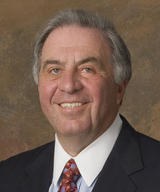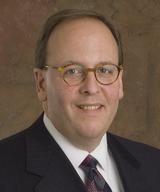Editor: Bill, please tell us about your role as Chairman of the firm's Management Committee.
Sasso: As Chairman of the firm's Management Committee and Board of Directors, I'm responsible for the firm's relationships with our clients and with the outside business community. I also oversee major issues that relate to strategic planning, lateral hiring, new offices, geographic expansion of the firm, and government relations.
Editor: John, please describe your role as co-chair of the firm's Government and Public Affairs Practice Group.
Saler: Along with my co-chair, Rick Mroz, I manage the day-to-day operations of the practice group. We do legislative lobbying for clients ranging from closely held companies to major Fortune 500 businesses. We also advise companies that would like to do business with federal, state, or municipal governments. Our regulatory practice supports a wide range of industries including utilities, pharmaceuticals, banking and financial services, and non-profits.
Editor: Bill, please tell our readers about some of the activities initiated during your term as Chairman of the Board of Directors of the Greater Philadelphia Chamber of Commerce.
Sasso: One of our prime initiatives, instituted in October of 2003 at the beginning of my tenure as Chairman, is to market and brand the greater Philadelphia region - which extends throughout Philadelphia, the five surrounding counties, southern New Jersey and Delaware. With the active involvement of business and political leaders, our focus is to raise $16 million in a one-year period to fund the marketing and branding effort for the next four years. We exceeded $10 million as of the end of May and we are very enthusiastic about our ability to raise the balance of the money by this coming October, when my term as Chairman ends.
Using these funds, we have launched television and radio advertising campaigns and have placed significant advertisements in Forbes magazine, as well as other publications. We had a supplement in Attaché magazine, which is USAirways' in-flight publication. All of these efforts are intended to educate those business leaders who may be thinking of relocating their companies to the East Coast, as well as to inform tourists across the country and internationally of Philadelphia's many treasures.
Editor: What financial incentives encourage companies to stay in the area as well as entice others to relocate here?
Sasso: Incentive programs at both the state and city level include grants and low-interest loans. For instance, Citizens Bank recently established a loan program at very favorable rates geared toward job creation. And the Commonwealth of Pennsylvania has been very aggressive in offering different programs, including the Keystone Opportunity Zone, guarantying loans and offering grants to businesses to relocate here. Also, to help maintain an economic climate attractive to business enterprises, Philadelphia's city council has considered a tax reform program package to reduce the tax burden on businesses in the city.
Editor: What is the economic climate in Philadelphia?
Sasso: Right now it is very good and improving daily. For example, during the building boom in the late '80s, a lot of 15-year leases were executed with major business tenants. As a result, leases are now expiring for many major businesses. I am aware of only one business out of 80 that has not renewed its lease. That business moved to Delaware; so it, too, remained in the region. This is just one example of how we've been very effective in stopping a job exodus. We continue to look for ways to grow our business base aggressively.
Saler: This is a highly competitive region for pharmaceutical and financial services companies. Pennsylvania, New Jersey and Delaware all compete with one another for headquarters and research labs by offering a myriad of incentives.
Governor Rendell has put together an economic stimulus package that includes low-interest loans for second-tier communities like Scranton, Altoona, and Erie to attract developers. Federally, development grants and enterprise zones are not as readily available compared with a few years ago. One of the things that our Government Affairs Group does for clients is identify grants and credits, in addition to putting these businesses in front of all the major decision makers in politics and business.
Editor: Bill, what role do educational institutions in Philadelphia play in maintaining a stable economic base?
Sasso: There are more than 80 colleges and universities in this region and they are key tools to attract new businesses and retain existing ones. Businesses feel reassured that the children of their employees have vast educational opportunities in our region. Our colleges and universities run the full gamut from small religiously sponsored organizations to major state-supported universities. We also have a large number of teaching hospitals, including the Jefferson Health System, University of Pennsylvania Health System, Drexel University School of Medicine, and Temple University Health System. In addition to providing educational opportunities for the medical community, they facilitate the growth of the pharmaceutical industry, which utilizes teaching hospitals for the purpose of clinical trials, testing and training.
One of the efforts of the Chamber of Commerce is to bring together the leaders of our educational institutions with leaders in the pharmaceutical industry to see if there is common ground. We are very fortunate in that the leaders of our educational institutions have also played important roles in the Chamber of Commerce.
We are very fortunate that the leaders of our educational institutions recognize the importance of business and have reached out to that community.
Editor: Please describe a few of the area's cultural assets?
Sasso:We have one of the finest orchestras in the world. The Philadelphia Museum of Art, a cultural icon in the Rocky movies, has one of the greatest art collections in the world. We have the Franklin Institute, the Academy of Natural Sciences, the Academy of Fine Arts, and the Rodin Museum, which houses the largest collection of Rodin's art outside of France. We have the newly built Kimmel Center, which is an architectural masterpiece and a fantastic setting for our ballet company and our orchestra. We have more historical houses and buildings than perhaps any other city in the nation, as well as the Betsy Ross House, the Liberty Bell and the new National Constitution Center. We have the Independence Square area where the Second Continental Congress met to create and ratify the Constitution and where the Declaration of Independence was born. Our numerous museums in the suburban areas include the Barnes Museum, which houses one of the greatest Impressionist collections in the world.We have zoos, aquariums, amusement parks, children's museums, arboretums, Longwood Gardens, parks, preserves and numerous other attractions for people of all ages.
We have thriving suburban areas within a half-hour commute of central Philadelphia. Our housing is very affordable as compared to Washington, D.C. and New York City. The surrounding suburbs are well serviced by train and public transportation, making the area extremely livable from a commuting standpoint. Philadelphia itself has dozens of neighborhoods, each with its own flavor, which offer the feel of community living in a big city.The housing stock is ample and diverse, so choices abound and prices are reasonable.
Editor: John, please tell us about Philadelphia's transportation system.
Saler: Philadelphia's subway system, rail system, buses and taxis make it easy to commute. I've lived in New York City, Washington, D.C. and Los Angeles. Philadelphia is by far the most livable and easiest to get around. A traffic jam here is maybe 20 minutes; in the New York Metropolitan area, seemingly interminable traffic jams are a daily occurrence. The rail system to all of the Philadelphia suburbs is as good as any. It is clean and safe. Improvements are always needed in transportation, but this city created an extensive transportation infrastructure a long time ago and only needs occasional updating, rather than a major overhaul.
Editor: Bill, as a member of the Executive Committee of the Philadelphia Convention and Visitors Bureau, please tell us about the efforts being made to attract more tourists to the city?
Sasso: Cultural and historic sites of international significance such as those I've mentioned attract countless tourists to Philadelphia. Our new Convention Center is state of the art, and the Convention and Visitors Bureau is working with the state legislature and the city administration to double the size of the Convention Center. We are fortunate to have an appropriation in this year's budget of approximately $400 million to accomplish this goal. We also work hand-in-hand with the hotel industry to increase tourism. Unlike every other major city in the U.S., Philadelphia has had an increase in international tourism since 9/11.We are making sales calls on an international level to capitalize on that reputation.
Our two new stadiums reflect our leadership in the sports arena: Citizens Bank Park for the Philadelphia Phillies and Lincoln Financial Field for the Philadelphia Eagles. In addition, the Philadelphia International Airport is going through fantastic growth, including the construction of a new international terminal.Our airport has been elevated to state-of-the-art status over the last five years through an aggressive building program.
Editor: What is your vision for Philadelphia in the future?
Sasso: I think that the city will enhance job growth through the marketing and branding effort. We're doing that not only on a general basis, but also by capitalizing on our strengths - including financial institutions, the pharmaceutical industry, the chemical industry and others - to ensure that the growth continues. I think that it would not be unheard of in the next 10 years, given the pharmaceutical industry's presence and the many medical schools we have, that Philadelphia could become the national center for developing cancer cures and treatments. We already have teaching hospitals that get NIH grants. By channeling them in a specific direction, we could become known in certain areas as the place to come for treatments and cures of certain diseases.
Saler: I agree with Bill on every point. One other thing that I would add is that this region, Philadelphia in particular, should become a magnet for domestic and international tourism. We have the same charm and history as Boston. Our culture rivals Chicago and New York City. We have many museums and cultural events. We also have an enormous amount of open space, including the largest city park in the United States, Fairmont Park - far bigger than Central Park. This is a wonderful place, not to be eclipsed by Washington, D.C. and New York City.
Published July 1, 2004.



